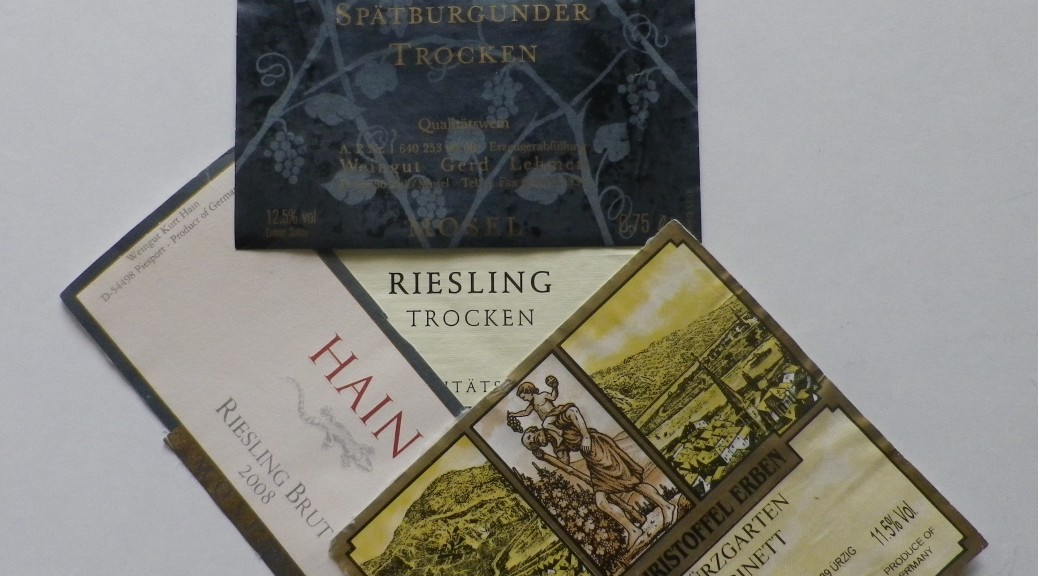What I Learned:
The Moselle River wineries are not that far from the Rhine river wineries in the Rheingau and the Rhein-Hesse wine regions, but they are figuratively speaking a world apart. Equally as proud of their line of products, which have centuries of tradition behind them, both river valley wine growers share something else in common: the cultivation of the Riesling grape as the single-most common varietal grown.
Wine growths along the Moselle River valley, are classified into three sections: The Upper Moselle area, the Middle Moselle area, and the Terraced Moselle.
The Upper Moselle begins at the French border, at Perl, and opposite the Luxembourg town of Schengen. It follows the river downstream. The soil here is characterized by shell limestone, marl and sediment. The slopes here are fairly gentle, and the Saar River joins into the Moselle in this zone. This area ends where it abuts against the Middle Moselle zone, around the city of Trier.
The Middle Moselle runs from Trier until the village of Briedel. Here, the soils derive primarily from Devonian slate, although the area around the village of Urzig, singularly famous for its wines, sits on soil of volcanic origin.
The Terraced Moselle is the most spectacular area visually: steep slopes rise from the river edge, as the Moselle twists and turns on its way to join the Rhine. This area, from Zell (with the famous black cat labels) to the river mouth at Koblenz, boasts some of the steepest vineyards in the world. Hence the need for the narrow terraces which dominate the landscape in certain areas. Here the soils developed from primarily quartzite sandstone.
In addition to the Riesling grape, which accounts for approximately 60 per cent of all cultivated area in this region, other white varietals include Mueller Thurgau and Eibling. It is in the Upper Moselle, where the Moselle laps the banks of both Germany and Luxembourg (see Luxembourg wine notes) and around Cochem that Eibling is predominantly cultivated, as it prefers the limestone soils found in those locations.
Red varietals include Pinot Noir, covering 4 per cent of cultivated area, closely followed by Dornfelder.
What I Tasted:
Terraced Moselle Zone:
2012 Riesling Kabinett Cochemer Rosenberg, Weingut Juergen Steuer – a fresh, clean taste, with hints of citrus and minerality.
2013 Riesling Hochgewaech Muedener St Castor Hoehle, trocken; Weingut Sonneneck – a rich, velvety mouthfeel, with slight hints of minerals, flowers and even less fruit. Has a slightly smoky taste to it as well, making it an interesting wine to drink.
2012 Riesling Kabinett Winninger Uhlen, trocken; Weingut Freiherr von Heddesdorf – mineral and floral notes, with a slight nutty taste. Again, an interesting wine to drink.

One thought on “Wine Notes: Moselle”
Comments are closed.